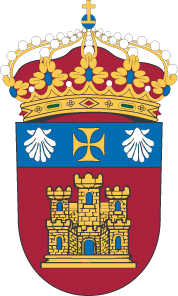Por favor, use este identificador para citar o enlazar este ítem: http://hdl.handle.net/10259/5818
Título
Ultra high temperature high-entropy borides: effect of graphite addition on oxides removal and densification behaviour
Publicado en
Ceramics International. 2021, V. 47, n. 5, p. 6220-6231
Editorial
Elsevier
Fecha de publicación
2021-03
ISSN
0272-8842
DOI
10.1016/j.ceramint.2020.10.200
Résumé
The introduction of 0.5–1.0 wt.% graphite to the powders prepared by Self-propagating High-temperature Synthesis (SHS) is found to be highly beneficial for the removal of oxide impurities (from 2.7-8.8 wt.% to 0.2–0.5 wt.%) during spark plasma sintering (1950°C/20 min, 20 MPa) of (Hf0.2Mo0.2Ta0.2Nb0.2Ti0.2)B2 and (Hf0.2Mo0.2Ta0.2Zr0.2Ti0.2)B2 ceramics. Concurrently, the consolidation level achieved is enhanced from about 92.5% and 88%, respectively, to values exceeding 97%. While a further increase of graphite slightly improves samples densification, final products become progressively richer of the unreacted carbon.
It is assumed that graphite plays a double role during SPS, e.g. not only as a reactant during the carbothermal reduction of oxides contaminant, but also as lubricating agent for the powder particles. The latter phenomenon is likely the main responsible for the densification improvement when 3 wt.% or larger amounts of additive are used. Another positive effect is the crystallite size refinement of the high-entropy phases with the progressive abatement of oxides, to confirm that their presence promotes grain coarsening during the sintering process.
Palabras clave
High-entropy metal borides
Oxide impurities
Spark plasma sintering
Self-propagating high-temperature synthesis
X-ray diffraction
Materia
Materiales
Materials
Versión del editor
Aparece en las colecciones
Documento(s) sujeto(s) a una licencia Creative Commons Attribution-NonCommercial-NoDerivatives 4.0 Internacional











